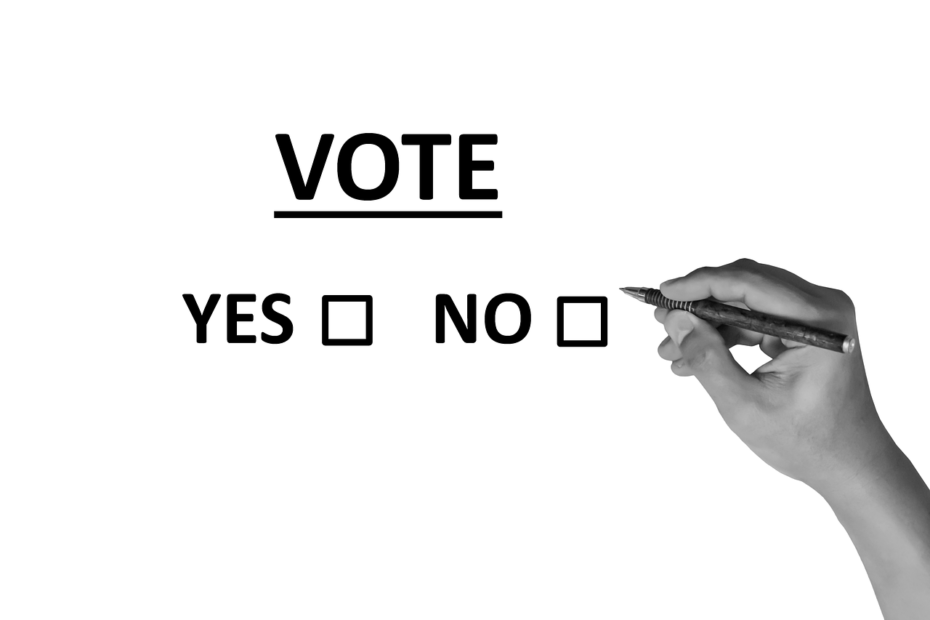Audience engagement has long been synonymous with voting or polling at live events. As events have moved into the digital sphere, polling still remains a tool that event planners can use.
Many new audience engagement apps seek to deliver innovative ways to make programmes more memorable and entertaining. However, if you have a specific message to communicate, for instance at a virtual conference or seminar, polling remains a robust and effective tool.
There are a number of apps on the market to run audience polls. Capabilities and styles vary, but essentially, they deliver similar benefits to organisers of virtual events.
Why does polling work?
Polling requires an audience to pause, process the information they have received, and form an opinion. That opinion then is converted into an action, in this case, the selection of one of a number of possible answers.
The simplest form of polling is multiple choice. However, audiences can also be asked to rank possible solutions according to priority, relevance or urgency. Some platforms even provide the opportunity engage visually, moving sliders or elements on a screen to group responses.
All these actions require the same from the audience: process the information, form an opinion and test this opinion by making a number of choices.
The result is a that the audience better remembers the messages and key arguments related to it.
Because audiences have internalised the information, they are also more likely to see its relevance to their own situations or dilemmas.
All audience interaction helps break up long programmes into digestible chunks. Audiences are at risk of losing focus or attention when the programme is detailed and long, but a timely interruption with an audience participation poll will help keep delegates engaged.
How to use polling
Many polls will take the form of multiple-choice questions. When composing your questions and choice of possible answers, you will find that this process can be a bit of an artform.
While there are no hard and rules, it is easy to make questions too wordy or ambiguous. Best practice is to review your questions from the perspective of the audience, and to ask some colleagues to answer the questions before you load them onto you virtual conference or seminar polling platform.
At the same time, you want the possible answers to stimulate the participants just enough to really consider the implications of what you have told them. In a way it is a bit of “pop quiz” to make sure everyone has paid attention. Likely you will have given them the answer a few minutes earlier.
A different approach is to use the poll as a transition to introduce a new theme. In this instance you are asking the audience to voice their opinion about a certain subject before you have discussed it. The response can then provide some interesting data to line up the next topic.
A nice segway would be to ask the expert presenter how they answered the question and why. If it is important to know if the audience has changed their opinion as a result of the presentation, ask the same question again at the end of the session and compare answers.
In each instance, prepare your response to the results of the poll. It is important to make a natural link between the audience poll and your next discussion topic. If the flow is natural, the audience will better follow your train of thought and arguments and therefore better remember the messages you have delivered.
Common mistakes
Have specific objectives in mind when planning for your audience poll. Without a specific purpose, the poll risks becoming a distraction, rather than an interactive element that adds value.
It has been my experience that many leave the content of audience polls to the last. If you decide to include polling into your presentation, plan for the content from the start. That will allow you to think through the transitions and what details you want the audience to take away from the presentation.
If you don’t deliberately transition or link to and from the poll to the next content segment, your audience may be confused. If the questions do not relate to the subject matter, participants will ask “what was the point in that?”
Don’t skip rehearsals. Presenters and the production team need to be fully familiar with both the technology and transition links for the tool to be effective.
In your programme and presentation, make sure you allow a few minutes to comfortably complete and link each poll. Time your rehearsals with a stopwatch, so that you know you have allocated enough time for your key messages as well as the poll. A steady and consistent pace for each element will help drive home your key messages.
Not sure if you should include polling?
Audience polling is a great tool for virtual and face-to-face events alike. The level of benefit or success you experience will be dependent on the time you allow for the preparation and delivery of the questions.
A well-executed audience survey or poll will help your audience remain engaged in your presentation and can also provide you with interesting data and audience insights.
Signet Marketing helps businesses improve the quality and ROI of their video content and virtual events. Contact us to explore what we can do for you.
